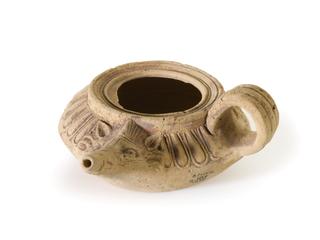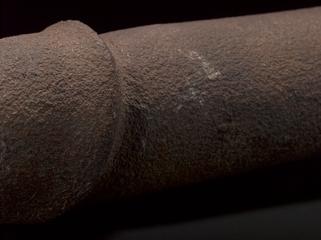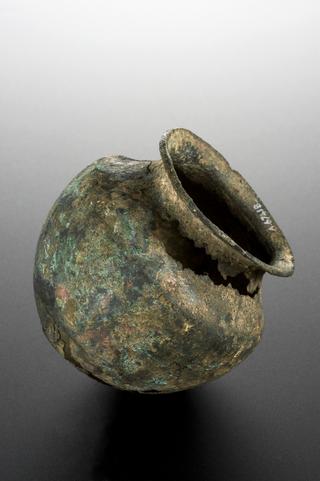
Earthenware juglet, Cyprus, 1600-1400 BCE
- Made:
- 1600-1400 BCE in Cyprus




"Base-Ring" juglet with handle and lip, earthenware, decorated with relief bands, from Cyprus, 1600BC to 1400BC
The small size of this earthenware juglet, measuring just over 130 mm high, indicates that it was used for an expensive liquid. The shape of the jug is similar to the shape of an opium poppy. Cyprus, where this jug was made, was the main exporter of opium at this time. Opium was dissolved in wine, which made it easier to transport and meant it could be traded secretly. It is a narcotic drug used to induce sleep and give pain relief and was also used recreationally for a ‘high’. It is very addictive.
Details
- Category:
- Classical & Medieval Medicine
- Collection:
- Sir Henry Wellcome's Museum Collection
- Object Number:
- A655415
- Materials:
- earthenware
- Measurements:
-
overall: 136 mm x 85 mm, 85 mm, 0.1kg
- type:
- juglet
- credit:
- Wellcome Trust (Purchased from Stevens)




